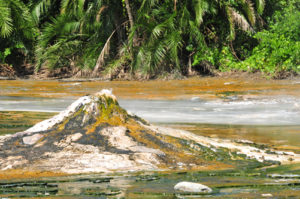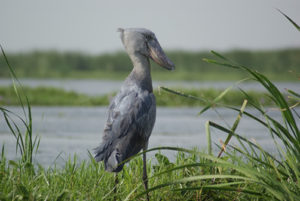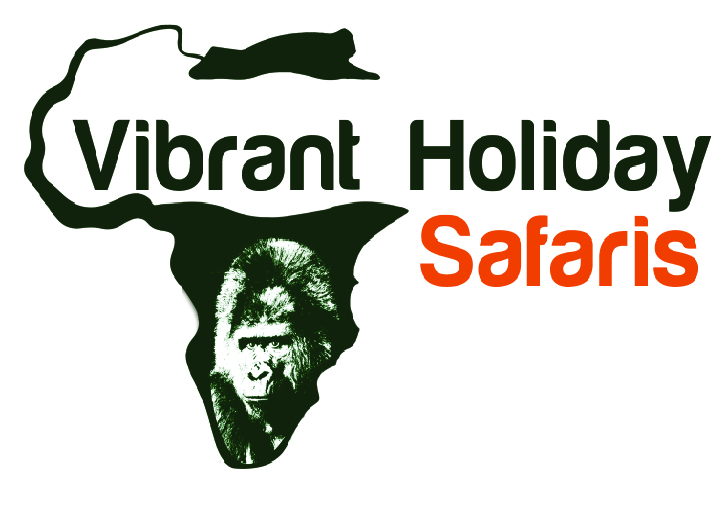Vibrant Holiday Safaris brings you Semuliki Forest Reserve which was created in 1932 and upgraded to national park status in 1993.
It is the only tract of true lowland tropical forest in East Africa, hosting 441 recorded bird species and 53 mammals.
Large areas of this low-lying park may flood during the wet season, a brief reminder of the time when the entire valley lay at the bottom of a lake for seven million years.
Four distinct ethnic groups live near the park – Bwamba farmers live along the base of the Rwenzori while the Bakonjo cultivate the mountain slopes. Batuku cattle keepers inhabit the open plains and Batwa, pygmies, traditionally hunter gathers, live on the edge of the forest.
Semuliki National Park sprawls across the floor of the Semuliki Valley on the remote, western side of the Rwenzori. The Park is dominated by the easternmost extension of the great Ituri Forest of the Congo Basin. This is one of Africa’s most ancient and bio-diverse forests; one of the few to survive the last ice age, 12-18,000 years ago.
The Semuliki Valley contains numerous features associated with central rather than eastern Africa. Grass Thatched huts are shaded by West African oil palms; the Semuliki River (which forms the international boundary) is a miniature version of the Congo River, the forest is home to numerous Central African wildlife species, and the local population includes a Batwa pygmy community that originated from the Ituri. As a result, this park provides a taste of Central Africa without having to leave Uganda.
While Semuliki’s species have been accumulating for over 25,000 years, the park contains evidence of even older processes. Hot springs bubble up from the depths to demonstrate the powerful subterranean forces that have been shaping the rift valley during the last 14 million years.
This biologically diverse region also provides shelter to a further 120 mammals, including several primate species such as baboons and chimpanzees, as well as elephants and antelopes. There are around 350 species of birds hosted in this forest, including 23 Albertine Rift endemics.
Hippos are common are common along the semuliki river, as are crocodiles, More than 300 species of butterflies have been identified, including 46 species of forest swallowtail, together with 235 moth species. Over 435 bird species have been recorded in Semuliki National Park. The checklist includes 35 Guinea-congo forest biome bird species, spot-breasted ibis, Haartlaub’s duck, Congo sepent eagle, chestnut flaned goshawk, red thighed sparrowhawk. Furthermore, another 12 species with extremely little distribution are spotted like the western bronze-naped pigeon. yellow throated cukoo.
Things To Do At Semliki National Park
There is no shortage of what to do in the park. Tourist interested in visiting Semuliki can choose to go for forest walks, birdwatching, primates watching, visiting the two hot springs, hiking and game drives. A cultural visit to one of the local tribes living outside the park should not be missed for a complete safari in Semuliki National Park.

Visiting the Sempaya Hot Springs: The two hot springs have made the park very famous. Tourists are more fascinated by the local stories about their formation than the scientific explanation. There is a female and male hot spring. The Male hot spring is about 12 meters in diameter and is called Bintente while the female in Nyasimbi. Boiling geyser gushes out steam and bubbling water several meters high and can be seen more than 1 kilometer away. The water gushing out is hot enough to boil eggs in ten minutes. In the past the people living in the forest would use the hot springs to cook food but this has been limited by the park management to allow tourists visit the place. As visitors head towards the hot springs, they encounter several species of birds and small primates climbing up and down the trees. The park authorities have built a tower and boardwalk for observing the hot springs at a safe distance. Local tribes usually organize cultural dances to entertain visitors who have come to see the hot springs. Apart from the hot springs, birds and primates, visitors can also visit the Mungiro Falls or go for a forest walk nearby.
Visiting the Semuliki River: Semuliki River is about 160 kilometers long. This muddy forest river is one of the water bodies that supply water to the great river Nile. The river is home to crocodiles, hippos and hundreds of birds. Visitors love taking long walks to follow the river as it meanders through forests and rift valley flowers.
Forest and Nature Walks: One of the popular activities in the park is taking a walk in the forest jungles to spot the vegetation, birds, butterflies and primates. Forest Walks usually begin from around the Sempaya park gate ending at the hot springs. There are three established walking trails in the park. One of them is the Sempaya Nature trail which is 8 km long, the Red-monkey track of about 11 km and the Kirumia Hiking trail of 13 Kilometers. Hikers need to carry rudimentary items like machete to cut overgrown vegetation as they clear paths in the forest. Visitors interested in camping in the forest need to come with their own equipment.
Game drives: Game drives in Semuliki National Park offer opportunities to spot over 52 mammals already mentioned. The park has three major tracks used for game drives that pass through the savannah plains of the park. Both day and night game drives are arranged by staff in the park. Visitors need to come with a good four wheel drive vehicle to pass through the more difficult sections of the park particularly during the rainy season.
Chimpanzee tracking: The Indiana University habituated some clans of Chimpanzee that are now open for tourism. Chimpanzee tracking permits cost $30 for international visitors. While tracking the chimpanzees, visitors should also expect to spot smaller primates like the Black and white Colobus monkeys, Central African red colobus, Dent’s Mona monkeys, grey-cheeked mangabey, Olive baboons and Red-tailed monkeys among many others. It is important to come prepared with the right clothing and equipment to protect against stinging insects, sharp tree branches and thorns. Come with enough drinking water and light snack.
Cultural visits and experiences: The area around the National park is home to by four indigenous tribes. Visitors can choose to visit any of the four tribes living in the edges of the park. The Batwa pygmies are hunters and forest gatherers while the Bakonjo and Bamba grow crops (rice, matooke/bananas, potatoes and cocoa) on the slopes of the mount Rwenzori. The Batuku live in the northern section of the park as pastoralists. Tourism and modernization is changing the lives of these tribes and particularly the Batwa. The Batwa used to live freely in the forests of Rwanda, Uganda and DR Congo but have been relocated to areas outside the national parks. Some of the Batwa in Semuliki National Park have been resettled in an area near Ntandi with the help of a Christian organization ADRA but with little success as they still find themselves longing for their old way of life in the forest. Some of the Batwa with support from the Uganda Wildlife Authority showcase their cultural heritage to visitors through dance, storytelling and other demonstrations. The Batwa grow and smoke Marijuana.
Birdwatching: Semuliki National Park is one of the best places for birdwatching in Uganda. Semuliki National Park has half of the bird species found in the Democratic Republic of Congo because the park is an extension of the greater Ituri forest of the DR Congo which stretches up to river Zaire. This extension allows species from central Africa to move up to Semuliki National Park. Birding in the park can be done in the forest, around the Sempaya hot springs or behind the rangers post.

Apart from species already mentioned earlier, others include the African Dwarf Kingfishers, African Piculet, Bates’ Nightjar, Black Dwarf Hornbill, Black-collared Lovebird, Black-wattled Hornbills, African Goshawk, Ayres Hawk-Eagle, Cassin’s Spinetail, Great Sparrows, Red-thighed Sparrows, White-spotted Flufftail, Black-winged Starling, Brown-crowned Eremomela, Chestnut-breasted Negro finches, Chestnut-flanked Goshawk, Chocolate-backed, Crested Malimbes, Eastern Bearded Greenbuls, Forest Francolin, Forest Thrushes, Gabon Woodpecker, Grant’s Bluebill,Green-tailed Bristlebill, Grey Ground Thrushes, Hartlaubs’s Duck, Ituri Batis, Lemon-bellied Crombec, Maxwell’s Black Weaver, Northern Bearded Scrub Robin, Pale-fronted finches, Piping Hornbills, Red-bellied Malimbes, Red-billed Dwarf, Red-billed Helmet Shrike, Red-chested Owlet, Red-eyed Puff-back, Red-rumped Tinkerbird, Red-sided Broadbill, Red-thighed Sparrowhawk, Simple Greenbulls,Spot-breasted Ibis, Spotted Lyre-tailed Honeyguides, Western Bronze-napped Pigeon, White-bellied Kingfisher, White-throated Blue Swallow, Yellow-throated Cuckoo, Yellow-throated Nicator and Zenker’s Honeyguides. Late in the evening, you can start to hear the nocturnal residents like the African Wood Owl and the Buff-spotted Flufftail.
When Is The Best Time To Visit Semliki National Park
Semuliki National Park is opened throughout the year. However, the best months to visit are during the dry seasons of April – June and July – September. During these dry months, driving through the park is easier because of less mud. The rainy season which fall between December – March and October to November cause difficulty navigating through the park. Some sections of the park become flooded as the rains fill up the rivers.
How To Get To Semliki National Park
Getting to semuliki from Kampala to Fort Portal: Kampala-Fort Portal via Mubende is about 180 Km. (about 4-5 hrs drive) while Kampala -Fort Portal via Masaka, Mbarara, Kasese is about 465 Km (7-8 hrs). In both routes 2-wheel drive vehicles can be useful.
